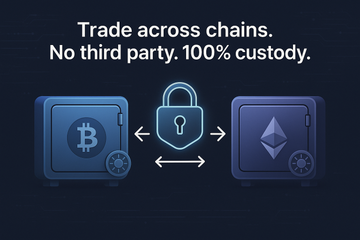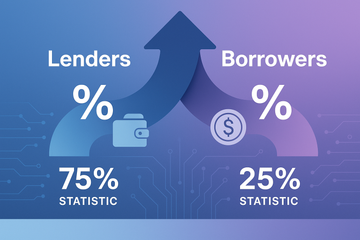All-Time High, or ATH, is a simple idea with a big shadow. It is the highest price an asset has ever reached. Stocks have it. Bonds can hit it too. Bitcoin, of course, lives and breathes by it. And when price slices through an old ceiling, people feel it. There is excitement, pride, worry, all wrapped together. You know what? That mix is normal.
What ATH Really Means, Plain and Simple
An ATH is the peak recorded price for an asset across its history. It is not a 24-hour high, not a weekly high, not even a yearly high. It is the highest print ever. In traditional markets, you might see a 52-week high on a stock, which is nice, but it is not the full story. ATH tells you where the absolute summit sits.
There are quirks. Stocks can split. Charts adjust. In crypto, you also have differences across exchanges. One platform might show a slightly higher tick than another. Some traders care about the intraday ATH. Others prefer the closing ATH. The key is consistency. Pick a source, stick with it, and know what it measures.
Why ATH Matters So Much in Crypto
Here is the thing. When price reaches an ATH, price discovery begins again. There is no historical resistance above. That often means quicker moves, wider candles, and louder chatter. Liquidity can improve because traders show up. Momentum traders watch those levels like hawks. Long-term holders, the diamond hands, may start thinking about trimming. Not always, but sometimes.
ATHs also signal sentiment shifts. Breaking an old peak says the market absorbed sellers from the last cycle. It hints that narratives changed. Maybe the tech matured, maybe regulation clarified, or maybe macro winds eased. Markets do not move on price alone. They move on stories, sometimes quiet, sometimes loud.
The Psychology Behind the Peak
Ever feel FOMO flicker when you see green candles? That is the ATH effect. People anchor to round numbers. They remember the last top. They fear missing the next run. Others feel the opposite. They fear buying the top and getting caught. Both reactions are human. Neither is a plan.
A useful trick is to treat the ATH like a weather report. Clear sky above, but storms can roll in fast. You do not panic because the forecast changes. You adjust. You set rules in calm moments, not while your heart races.
How to Check ATHs Without the Noise
Consistency is your friend. Tools like CoinGecko, CoinMarketCap, and TradingView show ATH data with timestamps. For deeper crypto context, on-chain platforms like Glassnode and IntoTheBlock add insights about supply, realized price, and holder behavior. A few tips help:
- Verify the exchange source. Prices vary by venue.
- Watch both intraday and closing highs. They paint different pictures.
- Check volume around the ATH. Strong volume often confirms strength.
- Mind inflation and currency. A USD ATH might differ from a EUR view.
Bitcoin’s Past Peaks, A Quiet Guide
Bitcoin’s history shows a rhythm. Peaks in 2013, then 2017, then the big surge again years later. Context shifts each time. Early cycles ran on early adopter energy. Later cycles brought institutions, custody solutions, clearer rules in some regions, and better market plumbing. Peaks do not repeat in the same way, yet they rhyme. Altcoins can mirror, lag, or go their own way. Liquidity and narrative decide the tune.
Here is a small contradiction. ATHs feel special, but they can also be ordinary. Markets are designed to make new highs if they keep growing. The magic fades when you view them as markers on a map. Still, for traders who live day to day, the marker matters. It shapes behavior, and behavior shapes price.
Trading Around ATH: Exciting, Tricky, Manageable
Let me explain. Breakouts above ATH can run fast, then stall, then rip again. Or they can fake out. Many traders treat the first break with caution and wait for a retest. Others ladder in, small at first, larger on confirmation. There is no single right move, only a plan you can follow without flinching.
- Plan entries and exits. Decide where you add, where you cut, and where you walk away.
- Use stop losses. You can set them below the breakout level or below a prior swing low.
- Respect liquidity. Thin books can whip price. Slippage is real.
- Watch funding and open interest. If leverage runs hot, risk rises.
- Scale, do not chase. Small size gives you room to think.
Some traders track relative strength against BTC or ETH. If your coin breaks its USD ATH, but lags against BTC, the move may be weaker than it looks. Simple, yes, but useful.
Investors, Not Just Traders, Care Too
Long-term holders treat ATHs as checkpoints. Maybe you rebalance. Maybe you trim a slice. Maybe you do nothing and journal your thoughts. A rule like this helps, sell a fixed percent whenever an asset rises a fixed percent. It is boring. It also keeps emotions from steering the car.
There is a tax angle. Realized gains have consequences in many countries. That does not mean you never sell. It means you plan. If you are not sure, speak with a professional. The calm conversation now beats the rushed decision later.
Security Gets Real When Price Heats Up
New highs attract old scams. Phishing climbs. Fake airdrops appear. Imposters pretend to be support. This is where hardware wallets earn their keep. Devices like Ledger Nano X or Trezor Model T let you confirm addresses on a secure screen. You tap the buttons, you sign the transaction, you keep the keys offline. That small ritual adds a big layer of safety.
- Never paste a seed phrase online. No site needs it. No one on chat needs it.
- Verify the receiving address on the device screen, not just on your laptop.
- Use a fresh address for large withdrawals when possible.
- Bookmark official sites. Typosquats look very real when you are in a rush.
- Update firmware from the device maker only, Ledger or Trezor, not random links.
If you are moving funds around an ATH, slow down. Fees rise, networks clog, and stress makes people click without thinking. A thirty second pause can save years of regret.
Common Myths That Trip People Up
Myth 1: ATH means it must crash now
Sometimes it does pull back. Sometimes it keeps running. The path depends on supply, demand, leverage, and narrative strength. Assume both paths are possible. Build for both.
Myth 2: All ATHs are the same
Not quite. An ATH on tiny volume is fragile. An ATH backed by strong spot buying, healthier. You can see the difference on TradingView or exchange order books. Context matters.
Myth 3: One exchange peak is the truth
Data varies. Different liquidity, different feeds, different wicks. Use a primary source and a backup. That small habit avoids a lot of confusion.
Myth 4: Market cap ATH equals price ATH
Supply changes. Emissions add tokens. Buybacks or burns remove them. A token can print a price ATH while market cap lags, or the other way around. Look at both.
Seasonal Clues, Subtle But Helpful
Crypto has rhythms. Halving narratives, conference seasons, and tax deadlines affect flows. None of this guarantees a result, but it colors the canvas. When the calendar stacks catalysts near old peaks, you get sharper reactions. When catalysts fade, moves can stall. Keep a simple calendar. It works better than guessing.
A Gentle Framework You Can Reuse
You do not need fancy math to treat ATHs well. A short checklist keeps you grounded:
- Define your source for ATH data and stick to it.
- Decide if you trade breakouts, retests, or not at all.
- Size positions so a wrong move stings, not breaks you.
- Secure your keys with a hardware wallet like Ledger or Trezor.
- Review after the move. What worked, what did not, what felt tense.
Small steps compound. You gain skill, you gain calm, and you make fewer frantic choices when candles spike.
So, Is ATH Overhyped?
Honestly, sometimes yes. And sometimes no. The fact that an asset reached its highest price is not a signal by itself. It is a signal with context. Combine it with volume, with funding, with macro, with on-chain data if you have it. Look left on the chart for structure, then look right for possibilities.
ATH is a headline, but your plan is the story. Write that story when the room is quiet. And when the next peak arrives, you will know exactly what to do, even if the crowd shouts. That is the real measure of confidence, not the number on the tape.
One last nudge. Celebrate your wins, protect your keys, and keep your process simple. Peaks come and go. Good habits stay.











